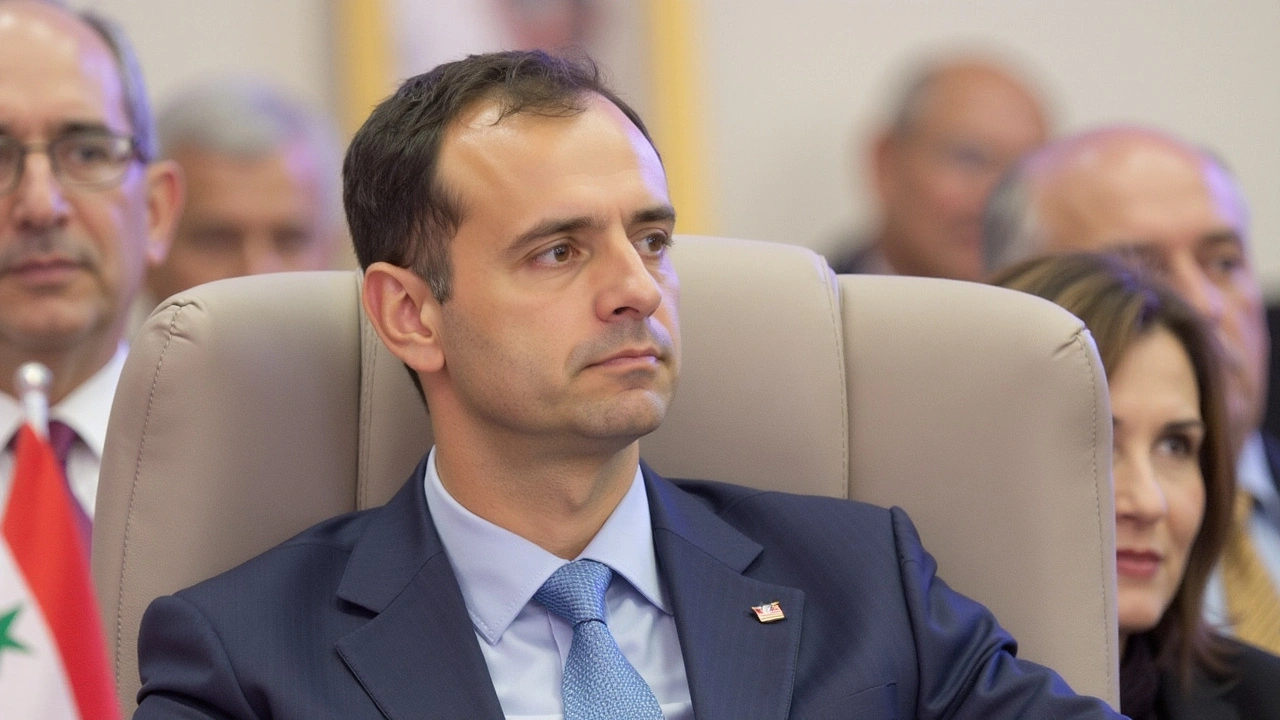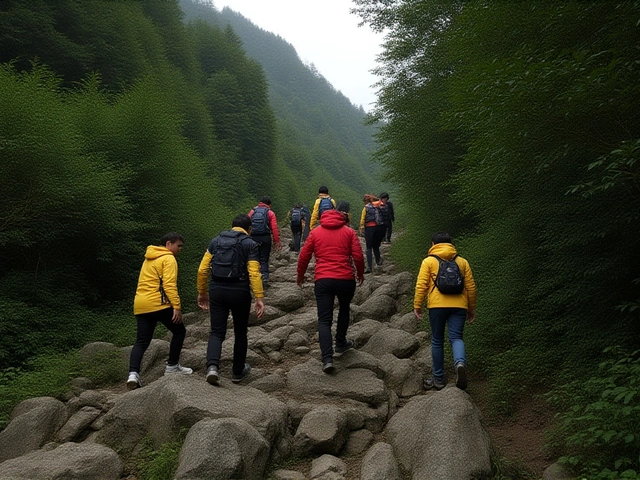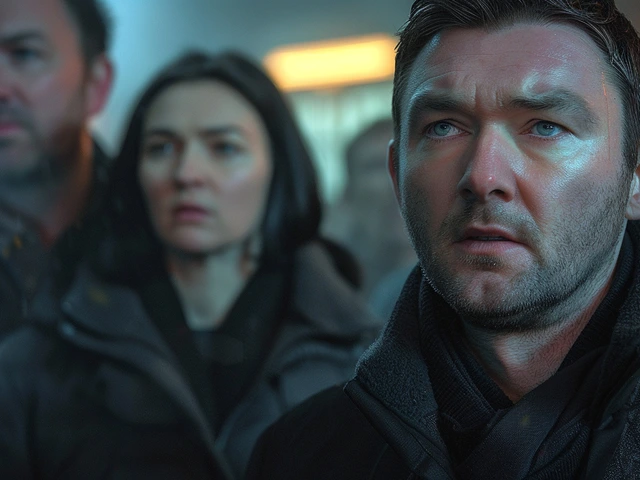The Legacy of Assad's Rule in Syria
The saga of the Assad family's rule over Syria is one marked with a heavy legacy of repression and suffering. Spanning over 50 years, Hafez al-Assad and his son Bashar al-Assad have held the Syrian people in a tight grip, casting a looming shadow over their hopes and futures. Hafez assumed power in 1970, establishing an era of autocratic rule that would suppress any form of dissent. Alongside a robust network of intelligence services, the state exerted its authority with little tolerance for political opposition, and public discontent was quelled swiftly and often brutally. When Hafez passed the reins to Bashar in 2000, many hoped for reforms. However, such aspirations dissipated quickly as Bashar leaned on similar tactics of control and instilled fear.
Bashar al-Assad's Ascendancy and Challenges
Bashar al-Assad's regime focused on maintaining dominance while projecting a facade of stability within the volatile Middle East. Initially, he tried to portray an image of a modern, reform-minded leader. Yet, the promise of reform waned in the face of persistent resistance to change and the strategic importance of survival at all costs. The 2011 Arab Spring was a critical juncture for the regime, sparking widespread protests and demands for freedom across the Middle East, including Syria. Amidst hopes for change, Assad's government responded with brute force, which led to the escalation of conflict into what has become a protracted civil war.
Civil War and Humanitarian Crisis
The Syrian Civil War has been nothing short of catastrophic. Hundreds of thousands lost their lives, mainly as a result of the government's military action. The reports of chemical attacks in 2013, widely attributed to Assad's forces, caused international outrage and accusations from the U.S. and The United Nations. With its cities laid to ruins and infrastructure decimated, a humanitarian crisis unfolded. Approximately half of Syria’s population of 23 million has been displaced, with millions scattering abroad as refugees or living in makeshift conditions within borders. Aided by allies like Russia, Iran, and Hezbollah, Assad's forces managed to reclaim swathes of territory, even as international powers intervened, sometimes opposing the extremist factions that emerged.
External Influence and Internal Struggle
While Assad has remained a controversial figure, his ability to retain power was heavily supported by international dynamics. Russia's military involvement, leveraging its air power from a naval base on the Syrian coast, provided crucial tactical support. Iran offered strategic and military advice, while Hezbollah’s fighters bolstered Syrian ground capabilities. Conversely, the war's chaos initially positioned the U.S. in a contradictory role. The rise of ISIS shifted focus toward combating extremism, occasionally aiding Assad indirectly. These complex alliances and opposition factions further complicated the prospects for peace, muddying the motivations and hopes for a stable post-Assad Syria.
The Current Status of Assad and Syria
As years of conflict have cost Syria dearly, Bashar al-Assad recently found his position increasingly precarious. With rebel movements gaining ground and diplomatic pressures mounting, he vacated Damascus, leaving speculation about his whereabouts. Opposing factions, united in a tenuous agreement of victory over Assad’s forces and their allies, have openly declared his defeat. Yet, the path toward rebuilding the battered nation and healing the deep wounds inflicted over decades remains fraught with challenges. The legacy of Assad’s reign is one of strife, with reconciliation and reconstruction requiring monumental efforts from Syrians and the global community. Syria's future, as the world watches, depends on resolving a legacy entrenched in authoritarian rule and conflict, aiming toward a peaceful and inclusive society.










17 Comments
Wow, that's a heavy history 😮
Your summary captures the decades of oppression quite well and reminds us how crucial it is to study these events for future peace
The Syrian conflict shows how external powers can both fuel and frustrate a civil war.
When Russia and Iran threw in their weight, the balance tipped dramatically.
It's also a reminder that humanitarian aid must navigate complex alliances.
Keep digging into the sources-they often reveal hidden layers 😊
Oh great, another thrilling saga of dictators and doomed uprisings-just what the world needed for its bedtime reading!
Same old story, same old bloodshed, nothing new.
The Assad dynasty, ever since Hafez seized power in 1970, has epitomized the archetype of entrenched autocracy, embedding surveillance and fear into the very fabric of Syrian society.
One cannot overlook the systematic dismantling of civil liberties that occurred under the pretext of maintaining national unity.
The ubiquitous presence of the Mukhabarat, the secret police, created an atmosphere where whispered dissent was tantamount to a death sentence.
Such an apparatus, evolving over half a century, became an instrument not merely of repression but of shaping collective consciousness through terror.
When Bashar inherited the throne in 2000, the world harbored a fragile optimism that modernization might soften the regime's iron grip.
That optimism evaporated like mist as the government's response to the 2011 protests revealed a chilling continuity of brutality.
The deployment of indiscriminate artillery in Aleppo and the alleged chemical attacks in Ghouta stand as grotesque testaments to a willingness to weaponize civilians.
International actors, while condemning these atrocities, nonetheless fed the fire by providing the regime with diplomatic cover and, at times, material aid.
Russia's air power and Iran's paramilitary support transformed a domestic rebellion into a proxy theater for geopolitical rivalry.
The resulting humanitarian catastrophe displaced millions, fractured families, and erased cultural heritage across ancient cities.
Yet, amid the rubble, a resilient civil society emerged, striving to document human rights violations and preserve narratives of survival.
This parallel resistance underscores the paradox that oppression can inadvertently galvanize the very opposition it seeks to annihilate.
From a philosophical standpoint, the Assad regime illustrates how power, when unchecked, becomes a self‑fulfilling prophecy of decay.
The legacy, therefore, is not merely a collection of battles and sanctions, but a deep‑seated trauma that will echo through generations.
Only a comprehensive reckoning that blends justice, reconstruction, and inclusive governance can hope to dissolve the lingering shadows of this authoritarian epoch.
Observing the Syrian theater, one discerns a textbook case of realpolitik where moral vacuity triumphs over humanitarian pretensions, a lamentable yet unsurprising outcome for any scholar of power.
The very mention of Bashar's vacillation conjures images of a tragic monarch, a Shakespearean figure haunted by the wails of his own people, yet cloaked in the opulent veneer of diplomatic parlance.
It is essential to recognize that sustainable peace will require not only political agreements but also grassroots reconciliation efforts that address the deep psychological wounds inflicted over decades.
The article lays out facts clearly
While many point to external meddling as the primary catalyst, one could argue that internal factionalism played an equally decisive role in perpetuating the conflict.
Indeed, the intricate tapestry of repression you described-replete with surveillance, artillery, and chemical nightmares-calls for a meticulous examination!!!
Another endless cycle of doom, how original.
We must channel this outrage into concrete action, supporting refugee resettlement programs and demanding accountability from all involved parties!
In alignment with the principles of international law, it is incumbent upon the global community to facilitate reconstruction initiatives that prioritize transparent governance and respect for human rights.
Your call for action resonates deeply; however, effective implementation will require coordinated policy frameworks that bridge humanitarian aid with long‑term socio‑economic development.
Hope will rise again 🌟